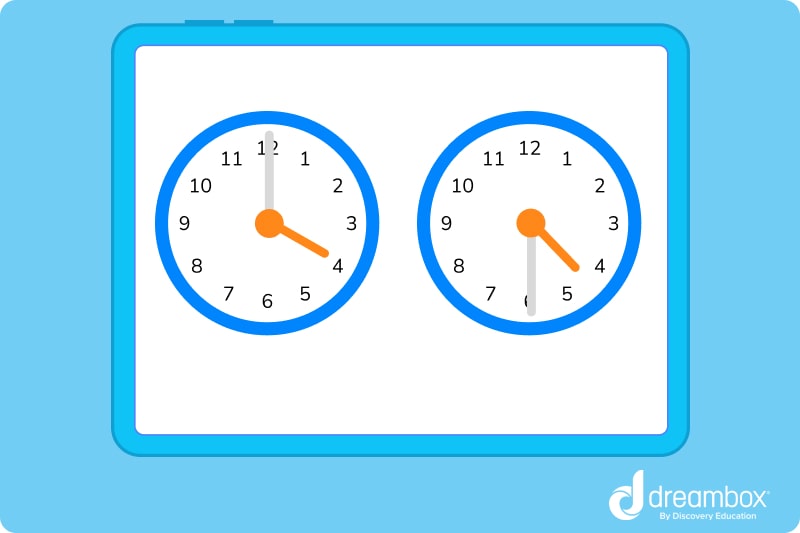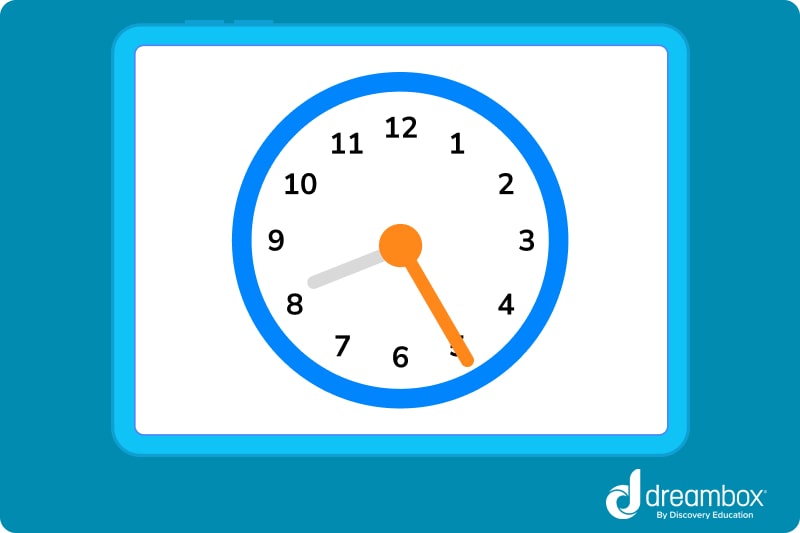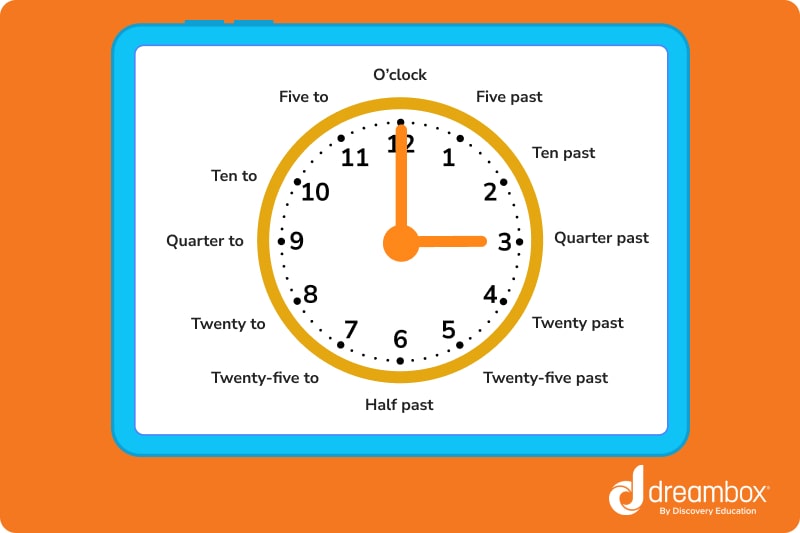How to Read a Clock to Tell Time
Telling the time with analog and digital clocks, made easy

Author
Jill Padfield
Published:
Oct 2024
Key takeaways
- • There are two kinds of clocks, analog and digital.
- • Analog clocks use an hour hand and a minute hand to tell time. Some analog clocks have a third hand to count seconds.
- • To count the minutes on an analog clock face, you can count through the 60 ticks around the face’s edge. To count the minutes quicker, you can count by multiples of 5.
Humans have been telling time for more than 5,000 years! Ancient time-keeping structures called sundials were constructed in Ancient Egypt as far back as 3,500 B.C. Water clocks in ancient Greece, candle clocks from China, and hourglasses were other early time-keeping technologies that paved the way for new time-keeping devices, like the pendulum clock, the mechanical alarm clock, battery-powered clocks, and electric watches.
Today, nearly everyone lives their life on a schedule dictated by time. So, knowing how to read a clock is a basic skill that we all need.
Types of clocks
Before we can learn how to tell time on a clock, let’s explore the types of clocks there are first.
Digital clocks
When you look at a phone, computer, or digital watch, you’ll most likely see a display of four numbers split in half by a colon. The first two numbers dictate the hour. The second two numbers dictate the minutes of the hour.
Digital clocks can use 12-hour time or 24-hour time (military time). If they are using 12-hour time, they may include the letters AM or PM to signal whether it is the first half of the day or the second half.
Analog clocks
Analog clocks are circular clocks with the numbers 1-12 around the edge. When we learn how to tell time as children, we’re always taught using analog clocks first.
These clocks use two hands to tell the time. The small hand dictates the hour, and the big hand dictates the minutes of the hour. Sometimes, analog clocks have a third hand to count seconds.
The time is determined by where on the clock face the hands are pointing.
Watches
Watches are clocks that can be worn on the body. Watches come in all shapes and sizes, and can be used as an accessory and a tool to tell time.
Watches can be either digital or analog.
Table of contents
Strengthen your math skills with DreamBox
Turn math into playtime with DreamBox Math
DREAMBOX MATH
Get started for FREE today!

How to Read An Analog Clock
Being able to read an analog clock now is just as important as it was 50 years ago!
Why? Because analog clocks will still be around and ticking when your phone runs out of charge. But how do you read one?
To know how to read an analog clock, you should first understand what the hands represent. Analog clocks always have two hands: an hour hand and a minute hand.
The hour hand
Each day is made up of 24 equal parts, called hours. The shorter hand on the clock points to the number that tells us the hour. When the hour hand (aka short hand) is pointing between two numbers, this means the hour is represented by the previous number.

The minute hand
The minute hand is the long hand. There are 60 minutes in an hour so there are 60 ticks around the edge of the clock face to represent those minutes. The number or tick this hand points at tells us what minute we are in.

Starting at the 12, count the tick marks clockwise (to the right) down to the minute hand to see how many minutes have passed. In between each big number are five ticks, so you can also skip count by 5’s. In the image above, the minute hand is pointed at the number 5, so you can multiply 5 by 5 ticks to get 25 minutes.

The math program that drives results
Get started today!
DreamBox adapts to your child’s level and learning needs, ensuring they are appropriately challenged and get confidence-building wins.
Understanding Time Words to Tell Time
Besides knowing how to read a clock using numbers, it is common to use time words to tell time instead. Here’s a list of time words you should know. Use them to convey what time it is quicker!
- Ten past – 10 minutes past the hour
- Quarter past – fifteen minutes past the hour
- Half past – 30 minutes past the hour
- Twenty to – 20 minutes until the hour
- Quarter to – 15 minutes until the hour
- Ten to – 10 minutes until the hour
- Half-hour – 30 minutes
- Quarter-hour – 15 minutes

AM and PM are also important terms to know. AM, which stands for Ante Meridiem, is the time of day between midnight to midday. PM stands for Post Meridiem and is the time between midday to midnight.
FAQs about telling time
When expressing time, we always start by saying the hour followed by the minutes. When telling time, we do the same thing. Start with the short hour hand, then move on to the long minute hand.
Yes, the hour hand is the little hand, sometimes called the short hand.
Military time is time told using a 24-hour system. This avoids the need to distinguish between AM or PM which is helpful since the military operates around the clock.
Take at home math practice to the next level
Empowering parents and educators to make math practice more impactful. Plus, your kids will love it.


About the Author
Jill Padfield
Jill Padfield has 7 years of experience teaching mathematics, ranging from Algebra 1 to Calculus. She is currently working as a Business Analyst, working to improve services for Veterans, while earning a masters degree in business administration.

